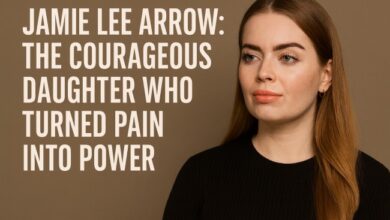Hawking Lucy: A Journey of Science, Storytelling, and Inspiration

When people hear the surname Hawking, the first thought often turns to the legendary physicist Stephen Hawking. Yet, behind that renowned name stands another remarkable individual: Hawking Lucy, his daughter, who has carved her own inspiring path in science communication, literature, and advocacy. Lucy Hawking is not only an accomplished writer but also a powerful voice who bridges the gap between complex scientific concepts and the curious minds of children and adults alike. Her work combines creativity, empathy, and educational innovation, making her a unique figure in the modern scientific and literary landscape.
Early Life and Education
Childhood in a World of Ideas
Born in 1970, Hawking Lucy grew up in Cambridge, surrounded by the intellectual brilliance of her father, Stephen Hawking, and the literary depth of her mother, Jane Wilde. This environment of science, art, and resilience shaped her worldview from a young age. Unlike many children, Lucy’s household was often filled with scientists, writers, and thinkers who influenced her curiosity and ambition.
Academic Path
Lucy pursued French and Russian at the University of Oxford, demonstrating her passion for languages and storytelling. Later, she studied international journalism at the City University of London. This combination of humanities and communication provided the foundation for her career as both a journalist and a science communicator.
Career in Journalism and Fiction
Journalism Contributions
Hawking Lucy began her career as a journalist, contributing to publications such as The Times, The Guardian, Daily Mail, and New York Magazine. Her writing demonstrated clarity, precision, and the ability to make complex issues accessible to a wide audience.
Early Fictional Works
Her initial foray into fiction resulted in novels like Jaded (2004) and Run for Your Life (2005). These works reflected her narrative talent, but Lucy’s most significant impact was yet to come.
The Transition to Science Writing for Children
Collaboration with Stephen Hawking
Lucy’s greatest contribution emerged through her collaboration with her father, Stephen Hawking, and physicist Christophe Galfard. Together, they authored the children’s book George’s Secret Key to the Universe in 2007. The book blended adventure, storytelling, and accurate scientific explanations, sparking curiosity among young readers worldwide.
The George Series
The success of the first book led to a series of sequels, including:
-
George’s Cosmic Treasure Hunt (2009)
-
George and the Big Bang (2011)
-
George and the Unbreakable Code (2014)
-
George and the Blue Moon (2016)
-
George and the Ship of Time (2018)
These books introduced children to concepts like black holes, the Big Bang, artificial intelligence, and the mysteries of space exploration. They remain essential reading for young science enthusiasts.
Science Communication and Educational Initiatives
Making Science Accessible
Hawking Lucy believes science should not be intimidating but exciting. Her approach focuses on weaving narratives that make scientific concepts relatable, sparking curiosity rather than fear.
The Principia Space Diary
In collaboration with the UK Space Agency and Curved House Kids, Lucy developed the Principia Space Diary, an educational program aimed at primary school children. This project engaged thousands of students in learning about astronaut Tim Peake’s mission to the International Space Station, blending creativity with scientific learning.
Virtual Reality Storytelling
Expanding beyond books, Lucy also experimented with innovative storytelling methods. She worked on The Party, a virtual reality film that places viewers in the perspective of an autistic teenager, combining technology, empathy, and social awareness.
Advocacy and Social Contributions
Autism Advocacy
Hawking Lucy’s son, William, was diagnosed with autism, a journey that deeply influenced her advocacy. She became a trustee of the Autism Research Trust, dedicating her voice to increasing awareness and supporting research to improve the lives of individuals with autism.
Supporting Disability Education
As Vice President of National Star College, Lucy promotes inclusive education and life skills for young people with disabilities. Her leadership highlights her commitment to social responsibility and human development.
Chair of the Stephen Hawking Foundation
Lucy also serves as the chairperson of the Stephen Hawking Foundation, which continues her father’s legacy by promoting education, scientific research, and health care for people with motor neurone disease.
Personal Strength and Inspiration
Family Life
Lucy married Alex Mackenzie Smith in 1998, and though the marriage ended in 2004, she has spoken openly about balancing her career with motherhood. Raising her son William has been a source of strength, shaping her into both a resilient parent and an advocate for autism awareness.
Carrying Forward a Legacy
Living in the shadow of Stephen Hawking’s genius could have been overwhelming, but Lucy has forged her own legacy. By combining literature, education, and advocacy, she honors her father while establishing her unique identity.
The Impact of Hawking Lucy on Science and Society
Inspiring the Next Generation
Through her children’s books and educational projects, Hawking Lucy has inspired millions of young readers to view science not as a set of intimidating formulas but as a universe full of wonder. She encourages critical thinking, creativity, and curiosity.
Promoting Empathy Through Storytelling
Beyond science, her work emphasizes empathy, inclusion, and the importance of understanding diverse perspectives. Her VR project and autism advocacy highlight her commitment to a kinder, more inclusive world.
Lessons from Hawking Lucy
The Power of Communication
Lucy demonstrates that science is not just for scientists. With effective communication, even the most complex ideas can be made simple and engaging.
Resilience and Adaptability
Her journey reflects resilience—navigating personal challenges, embracing different careers, and adapting to new storytelling methods.
Merging Science and Humanity
Perhaps her greatest lesson is that science and humanity are not separate. By blending facts with stories, logic with compassion, Hawking Lucy proves that knowledge is most powerful when shared with empathy.
Conclusion
Hawking Lucy is more than the daughter of a famous physicist. She is a writer, communicator, educator, and advocate whose influence continues to grow. Her children’s books open the cosmos to young minds, her advocacy supports vulnerable communities, and her dedication ensures that science remains a story everyone can be part of.
In an era where misinformation and disconnection threaten understanding, voices like Lucy’s are vital. She bridges the gap between imagination and knowledge, between empathy and discovery. Hawking Lucy’s journey reminds us that science is not only about equations and theories—it is also about humanity, storytelling, and the limitless potential of curiosity.



